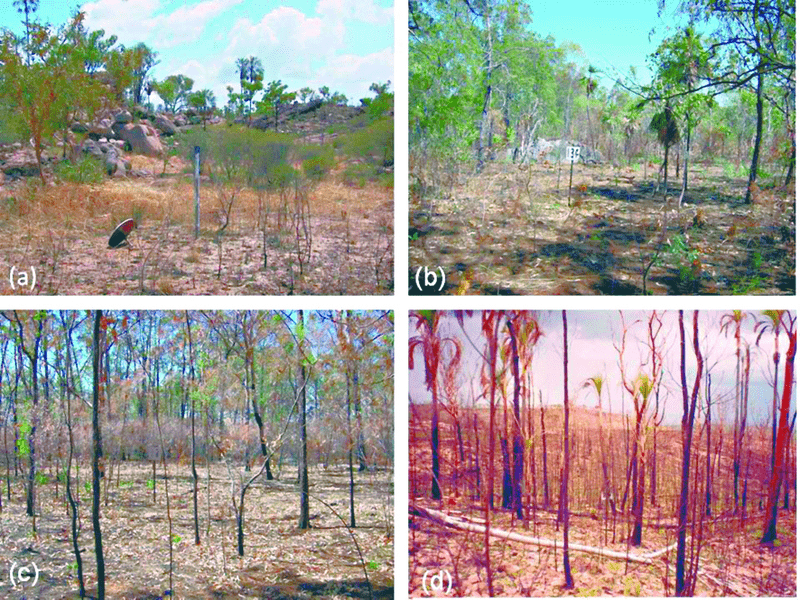Illustrations of fire severity index classes where: (A) Class 1, patchy (low severity); (B) Class 1 (low severity); (C) Class 2 (moderate severity); (D) Class 3 (high severity) (photos from Russell-Smith and Edwards 2006*).
Quality long-term ecological data to underpin sound science is key to developing sustainable land and resource management enterprises in northern Australia. TERN’s Long Term Ecological Research Network (LTERN) has four research networks operating in northern Australia that have been collecting such ecological data for several years, in some cases decades.
In the Northern Territory, LTERN’s Three Parks Savanna Fire-Effects Plot Network is investigating the effects of management-imposed fire regimes on the plants and animals of our northern savannas. The network has recently made available ten years of fire severity monitoring data via the TERN Data Discovery Portal (TDDP). Plot Leader, Dr Jeremy Russell-Smith of Charles Darwin University, says that long-term datasets such as these are vital for achieving sustainable land management over the northern savanna as they help national park managers understand the outcomes of management decisions. ‘This data has helped us to understand the benefits of landscape-scale carbon sequestration and savanna burning emissions abatement projects—especially on the vast majority of northern savanna lands with limited economic pastoral and agricultural potential,’ says Jeremy.
Also operating in northern Australia is LTERN’s Tropical Rainforest Plot Network. One of this plot network’s key research aims is to understand how tropical forests recover following landscape-scale disturbance events such as cyclones, perhaps the most dramatic modifier of rainforest structure. The network’s permanent rainforest plots contain a 40-year record of cyclone impacts on forest dynamics across an area 1000 kms long from Iron Range on Cape York to the Mackay Whitsunday region. Long-term datasets like these are fundamental to the development of land response scenarios, which can then be translated into new management approaches and informed policy development.
Data snapshot:
Fire severity data from LTERN’s Three Parks Savanna Fire-Effects Plot Network is now available via the TDDP.
Recent publications:
TERN’s latest book, ‘Biodiversity and Environmental Change: Monitoring, Challenges and Direction’ highlights much of LTERN’s monitoring efforts in northern Australia. The book contains chapters on the Three Parks Savanna Fire-Effects and Tropical Rainforest Plot Networks in addition to chapters highlighting TERN’s collaboration in other northern Australian ecosystems, such as the desert environments of north-east QLD and the acacia shrublands and tussock grasslands of northern WA.
Natural History magazine recently published an interesting article about the 50th anniversary of LTERN’s Connell Plots in FNQ.
*Russell-Smith, J. and A. C. Edwards (2006). “Seasonality and Fire Severity in Savanna Landscapes of Monsoonal Northern Australia.” International Journal of Wildland Fire 15(4): 541-550. Available online.
Published in TERN newsletter March 2014







